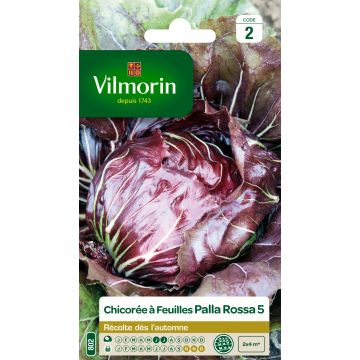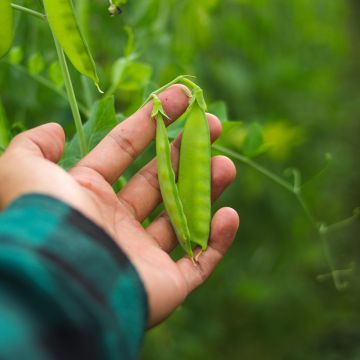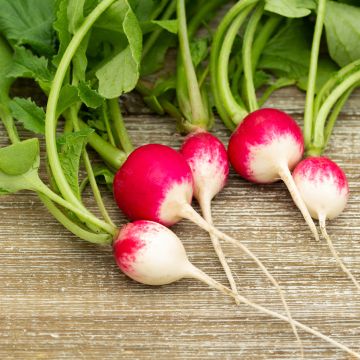

Christophine - Chayote


Christophine - Chayote
Christophine - Chayote
Sechium edule
Chayote, Vegetable Pear, Madeira Marrow, Chaco, Cho-cho
Never came out, I have to say I planted them the wrong way ☹️.
Gilles , 10/09/2024
This item cannot be shipped to the selected country
Delivery charge from €5.90
Delivery to Corse prohibited
More information
Schedule delivery date,
and select date in basket
This plant carries a 6 months recovery warranty
More information
We guarantee the quality of our plants for a full growing cycle, and will replace at our expense any plant that fails to recover under normal climatic and planting conditions.
From €5.90 for pickup delivery and €6.90 for home delivery
Express home delivery from €8.90.
Delivery to Corse prohibited: UE law prohibits the import of this plant from mainland France to Corse as part of the fight against Xylella fastidiosa. Please accept our sincere apologies.
More information
Description
Chayote, also known as Christophine and Chow Chow, produces pear-shaped fruits with rough, green-yellow skin. The flesh is firm and pale green. It is a fast-growing exotic plant with long climbing stems that can be grown in the ground or in pots. The fruit has a flavor similar to zucchini and potato. Plant the entire fruit from March to May for a harvest from August to October.
The term Chayote refers to both the plant and the fruit. It is known by many other names depending on where it is grown. It is called Chouchou or Chayote in Reunion Island, Mirliton in Haiti, Xuxu in Brazil, Chouchoutte in New Caledonia, and so on. Chayote belongs to the Cucurbitaceae family, like squash. Originating from Mexico, this exotic plant produces long climbing stems with tendrils that can reach several metres in length. After summer flowering, the plant becomes covered in numerous fruits.
Chayote has a pear-like shape with green-yellow, rough skin. The flesh, located around the central seed, is firm and pale green. The resulting fruit is used as a vegetable. It has a flavor similar to zucchini and potato.
Once peeled, Chayote can be consumed raw or cooked. Grated or diced, it can be used to garnish salads. When baked in gratins, mashed, or sautéed, it adds a touch of originality to dishes. It can also be prepared in sweet dishes, such as cakes, compotes, or jams. Chayote is low in calories and rich in vitamin C, copper, and magnesium.
To grow it in your garden, plant the entire fruit. The seed will germinate inside the fruit. Planting should initially be done in a pot and then, depending on the climate, it can be transferred to the ground or a large pot.
Harvesting: Chayote is harvested at the end of summer and before frost, from August to October. The ripe fruit is green-yellow in colour. It is a very productive plant.
Storage: Harvested fruits can be stored for several months in a cool, well-ventilated place away from light.
Gardener's tip: Everything is edible in Chayote! In some regions, it is common to consume not only the fruit but also the young shoots prepared like asparagus, the leaves cooked in stews, and the tubers in the form of fries.
Report an error about the product description
Harvest
Plant habit
Foliage
Other Vegetable garden A to Z
Planting and care
It is the entire fruit that is planted in the ground for cultivation. This is done in spring, from March to May. Initially grown in a pot, the chayote can then be transplanted into open ground in regions with a mild climate or be grown in a large pot for cooler regions.
In a pot with a diameter of 15 to 20 cm (6 to 8in), mix potting soil and garden soil. Plant the entire fruit, with the thinner end facing upwards. Plant it two-thirds deep. Install a stake. Water regularly. Place your pot in a well-lit and warm indoor location. From mid-May, when the risk of frost has passed, you can transplant the chayote into open ground if your winters are mild. It thrives in rich, well-drained soil and appreciates sunny and sheltered spots. Add compost at the time of planting. Install a large trellis for support or let it crawl on the ground if you have enough space. The vines can reach several meters in length. Cut the vines after harvesting. In winter, protect the base from the cold with a thick layer of mulch. The stump will sprout again in May.
In regions with harsh winters, you can continue to cultivate the chayote in a pot. After germination, transfer it to a large pot with a capacity of 15 to 20L, filled with potting soil and garden soil. Use a sturdy stake. During the warmer seasons, place your pot outdoors and bring it indoors before the frost sets in. Keep it in a bright location.
This highly productive plant can produce for 7 to 8 years.
Cultivation
Care
Intended location
-
, onOrder confirmed
Reply from on Promesse de fleurs
Bulbs, crowns, and tubers
Haven't found what you were looking for?
Hardiness is the lowest winter temperature a plant can endure without suffering serious damage or even dying. However, hardiness is affected by location (a sheltered area, such as a patio), protection (winter cover) and soil type (hardiness is improved by well-drained soil).

Photo Sharing Terms & Conditions
In order to encourage gardeners to interact and share their experiences, Promesse de fleurs offers various media enabling content to be uploaded onto its Site - in particular via the ‘Photo sharing’ module.
The User agrees to refrain from:
- Posting any content that is illegal, prejudicial, insulting, racist, inciteful to hatred, revisionist, contrary to public decency, that infringes on privacy or on the privacy rights of third parties, in particular the publicity rights of persons and goods, intellectual property rights, or the right to privacy.
- Submitting content on behalf of a third party;
- Impersonate the identity of a third party and/or publish any personal information about a third party;
In general, the User undertakes to refrain from any unethical behaviour.
All Content (in particular text, comments, files, images, photos, videos, creative works, etc.), which may be subject to property or intellectual property rights, image or other private rights, shall remain the property of the User, subject to the limited rights granted by the terms of the licence granted by Promesse de fleurs as stated below. Users are at liberty to publish or not to publish such Content on the Site, notably via the ‘Photo Sharing’ facility, and accept that this Content shall be made public and freely accessible, notably on the Internet.
Users further acknowledge, undertake to have ,and guarantee that they hold all necessary rights and permissions to publish such material on the Site, in particular with regard to the legislation in force pertaining to any privacy, property, intellectual property, image, or contractual rights, or rights of any other nature. By publishing such Content on the Site, Users acknowledge accepting full liability as publishers of the Content within the meaning of the law, and grant Promesse de fleurs, free of charge, an inclusive, worldwide licence for the said Content for the entire duration of its publication, including all reproduction, representation, up/downloading, displaying, performing, transmission, and storage rights.
Users also grant permission for their name to be linked to the Content and accept that this link may not always be made available.
By engaging in posting material, Users consent to their Content becoming automatically accessible on the Internet, in particular on other sites and/or blogs and/or web pages of the Promesse de fleurs site, including in particular social pages and the Promesse de fleurs catalogue.
Users may secure the removal of entrusted content free of charge by issuing a simple request via our contact form.
The flowering period indicated on our website applies to countries and regions located in USDA zone 8 (France, the United Kingdom, Ireland, the Netherlands, etc.)
It will vary according to where you live:
- In zones 9 to 10 (Italy, Spain, Greece, etc.), flowering will occur about 2 to 4 weeks earlier.
- In zones 6 to 7 (Germany, Poland, Slovenia, and lower mountainous regions), flowering will be delayed by 2 to 3 weeks.
- In zone 5 (Central Europe, Scandinavia), blooming will be delayed by 3 to 5 weeks.
In temperate climates, pruning of spring-flowering shrubs (forsythia, spireas, etc.) should be done just after flowering.
Pruning of summer-flowering shrubs (Indian Lilac, Perovskia, etc.) can be done in winter or spring.
In cold regions as well as with frost-sensitive plants, avoid pruning too early when severe frosts may still occur.
The planting period indicated on our website applies to countries and regions located in USDA zone 8 (France, United Kingdom, Ireland, Netherlands).
It will vary according to where you live:
- In Mediterranean zones (Marseille, Madrid, Milan, etc.), autumn and winter are the best planting periods.
- In continental zones (Strasbourg, Munich, Vienna, etc.), delay planting by 2 to 3 weeks in spring and bring it forward by 2 to 4 weeks in autumn.
- In mountainous regions (the Alps, Pyrenees, Carpathians, etc.), it is best to plant in late spring (May-June) or late summer (August-September).
The harvesting period indicated on our website applies to countries and regions in USDA zone 8 (France, England, Ireland, the Netherlands).
In colder areas (Scandinavia, Poland, Austria...) fruit and vegetable harvests are likely to be delayed by 3-4 weeks.
In warmer areas (Italy, Spain, Greece, etc.), harvesting will probably take place earlier, depending on weather conditions.
The sowing periods indicated on our website apply to countries and regions within USDA Zone 8 (France, UK, Ireland, Netherlands).
In colder areas (Scandinavia, Poland, Austria...), delay any outdoor sowing by 3-4 weeks, or sow under glass.
In warmer climes (Italy, Spain, Greece, etc.), bring outdoor sowing forward by a few weeks.












































